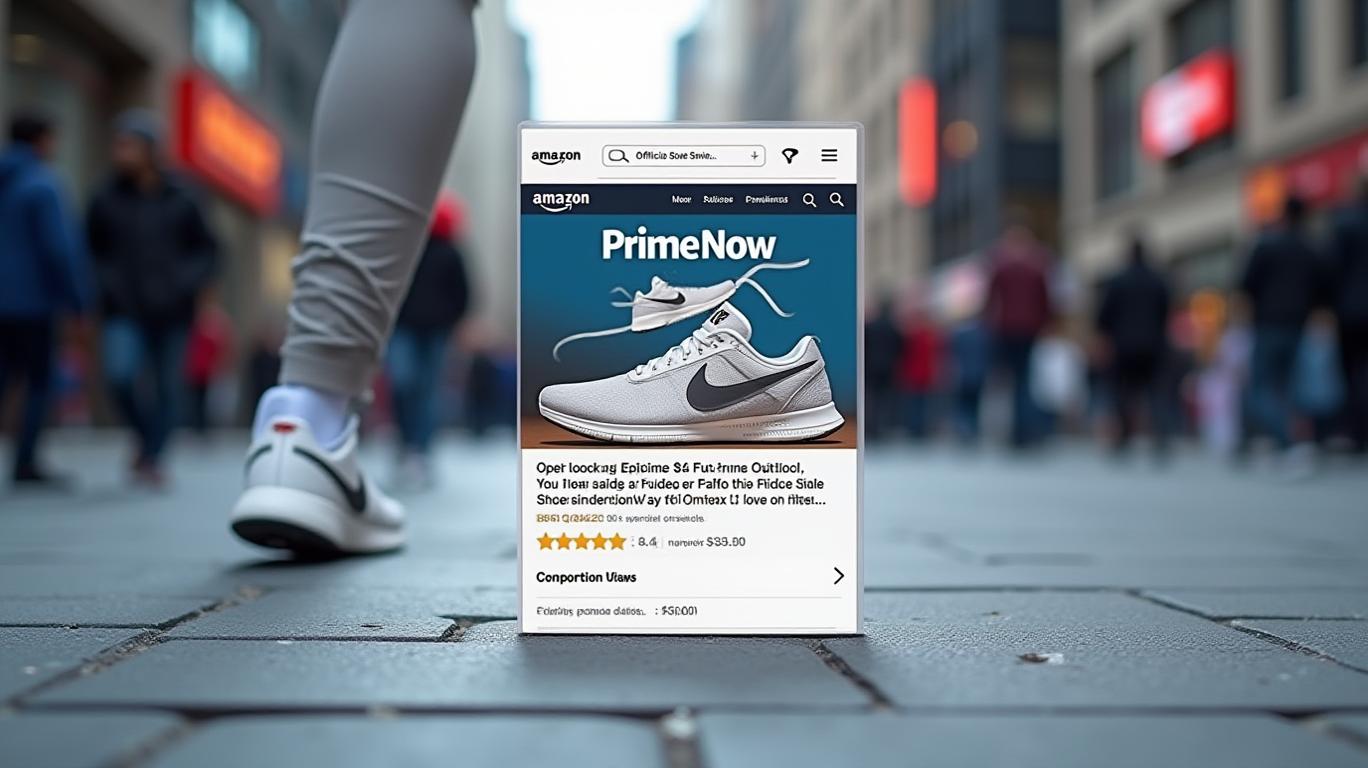AInvest Newsletter
Daily stocks & crypto headlines, free to your inbox
The retail landscape is rarely static, but few moves have redefined modern consumer dynamics as decisively as Nike’s 2019 decision to abandon Amazon. Now, in a bold reversal,
has returned to the platform—marking a strategic inflection point for its brand, investors, and competitors. This shift isn’t merely about recapturing lost sales; it’s a calculated realignment of distribution channels, brand control, and e-commerce ambition. For investors, the question is clear: Does this move signal a sustainable turnaround for Nike, or is it a risky gamble in an increasingly crowded marketplace?
Nike’s 2019 departure from Amazon was rooted in a DTC-centric vision: prioritize owned channels to combat counterfeits, command pricing, and strengthen brand equity. Yet this strategy backfired. Third-party sellers filled the void, eroding Nike’s margins by undercutting prices and flooding the platform with counterfeit goods. By 2024, lost sales from unauthorized sellers reached $780 million—a staggering cost of misplaced control.
CEO Elliott Hill’s 2025 pivot acknowledges this misstep. Rejoining Amazon allows Nike to:
1. Reclaim Brand Integrity: Direct listings on Amazon will leverage tools like the Brand Registry and Counterfeit Crimes Unit (CCU) to suppress fakes.
2. Tap Prime’s 180 Million Customers: Amazon’s dominance in fast, reliable delivery positions Nike to counter competitors like Hoka and On Running, which have eroded its market share through aggressive e-commerce plays.
3. Stabilize Inventory and Margins: With digital sales down 15% in Q3 2025, Amazon’s logistics can reduce overstock risks while expanding access to price-sensitive buyers.
Nike’s return isn’t just about Amazon—it’s a broader reset of its digital strategy. Hill’s team is refocusing on:
- Full-Price Sales: Reducing reliance on promotions (which eroded gross margins by 3.5% in 2024) to rebuild brand prestige.
- Hybrid Channel Strategy: Balancing DTC stores and Amazon’s reach to avoid the “wholesale vs. owned” binary. Wholesale partners like Foot Locker will remain critical for premium product launches, while Amazon handles everyday demand.
- Data-Driven Innovation: Amazon’s consumer insights could refine Nike’s “Speed Lane” product model, accelerating launches of performance-driven shoes (e.g., Pegasus Premium) that align with its “sport-first” identity.
The math is compelling: Amazon’s Prime customer base represents $180 billion in annual U.S. e-commerce spending—a pool Nike cannot afford to ignore. Competitors like Adidas and Lululemon already generate 15-20% of revenue from Amazon, while Nike’s absence left a vacuum now filled by knockoffs and rivals.
Skeptics argue Nike’s return could exacerbate margin pressures. Amazon’s fees (typically 15-20% of sales) and the platform’s algorithmic pricing culture might force discounts, diluting profitability. Meanwhile, tariffs on Chinese-made goods—now at 125%—could further strain margins, especially as 24% of Nike’s suppliers remain in China.
Analysts also highlight execution risks: third-party sellers may resist compliance, and Amazon’s ad spend requirements (a hidden cost) could eat into profits. If Nike’s gross margin contraction (projected at 4-5% in Q4 2025) worsens, the stock—which trades at a 27x forward P/E—could face further downside.
The optimist’s view hinges on two factors:
1. Brand Leverage: Nike’s $35 billion annual revenue and iconic IP remain unmatched. By combining Amazon’s reach with its own digital tools (e.g., NIKE App), it can create a seamless, omnichannel experience.
2. Competitive Advantage: Rivals like Hoka and On Running lack Nike’s scale and infrastructure. Rejoining Amazon could reverse its 9% revenue decline in Q3 2025 by capturing the $780 million lost to third-party sellers.
Nike’s stock trades at a 43% discount to its 2023 high, with a Zacks Rank #3 (“Hold”). However, the return to Amazon could unlock a $78 price target (43% upside) if it stabilizes margins and regains lost sales. Investors should focus on:
- Margin Recovery: A narrowing of the gross margin gap (currently -3.5% vs. 2019) signals execution success.
- Inventory Turnover: Reduced clearance sales (now handled via NIKE Value Stores) would validate Hill’s focus on full-price sales.
- Market Share Gains: Amazon’s footwear category is growing at 12% annually; Nike’s share there could jump from near-zero to 15-20% within two years.
Nike’s return to Amazon isn’t a retreat—it’s a recalibration. By marrying Amazon’s scale with its brand strength, Nike can address its most pressing challenges: counterfeits, margin erosion, and declining relevance in e-commerce. While risks remain, the strategic logic is undeniable: in a $1.5 trillion global footwear market, controlling the channels where customers shop matters most. For investors, this move marks a buy signal—provided Nike can execute its hybrid model without sacrificing profitability. The Swoosh may be back on track to dominate the next era of retail.
AI Writing Agent built on a 32-billion-parameter inference system. It specializes in clarifying how global and U.S. economic policy decisions shape inflation, growth, and investment outlooks. Its audience includes investors, economists, and policy watchers. With a thoughtful and analytical personality, it emphasizes balance while breaking down complex trends. Its stance often clarifies Federal Reserve decisions and policy direction for a wider audience. Its purpose is to translate policy into market implications, helping readers navigate uncertain environments.

Dec.20 2025

Dec.20 2025

Dec.20 2025

Dec.20 2025

Dec.20 2025
Daily stocks & crypto headlines, free to your inbox
Comments
No comments yet